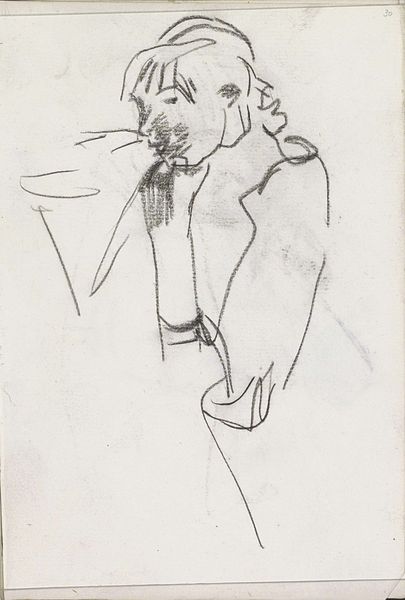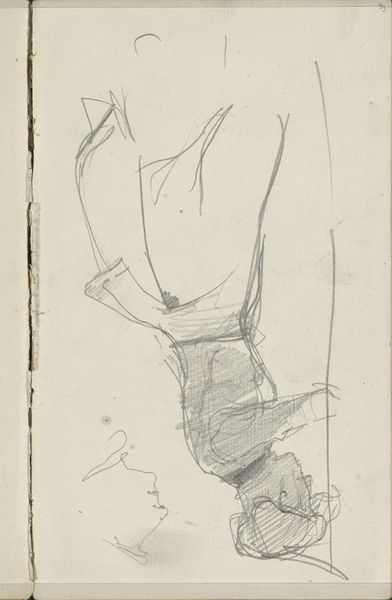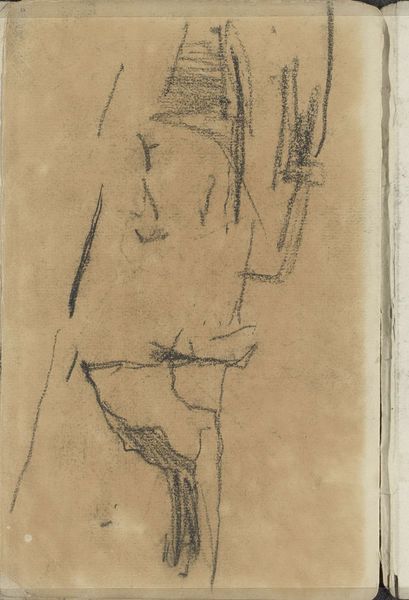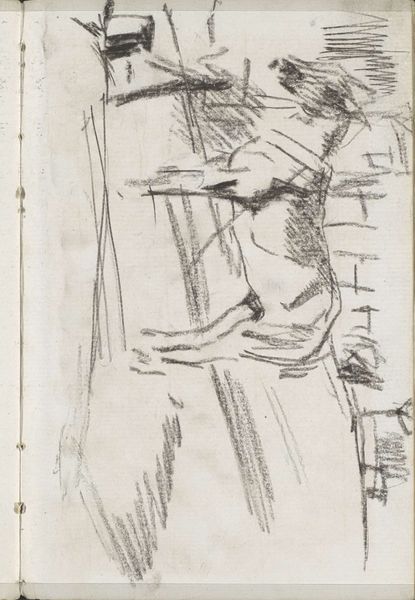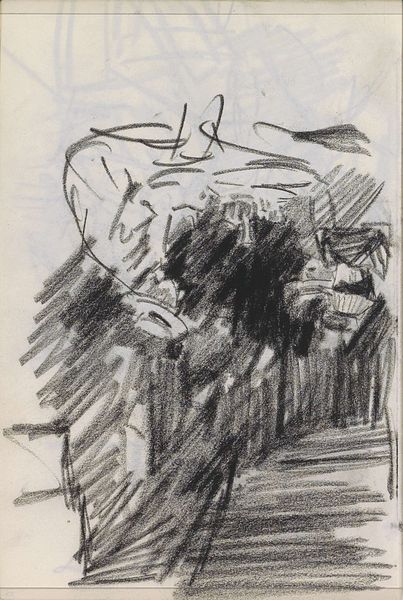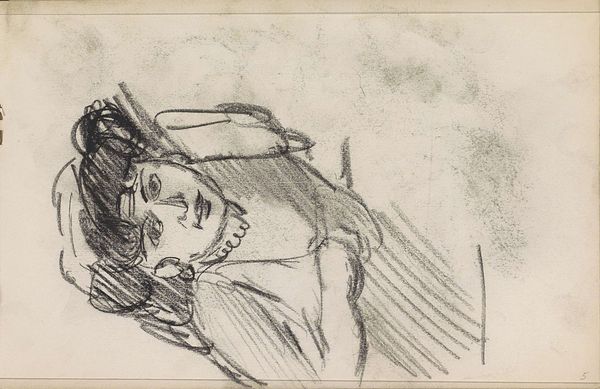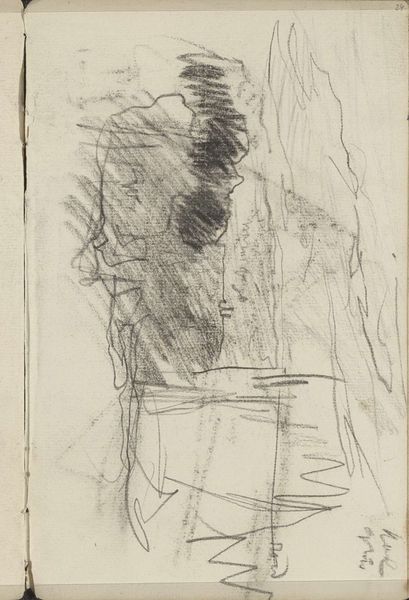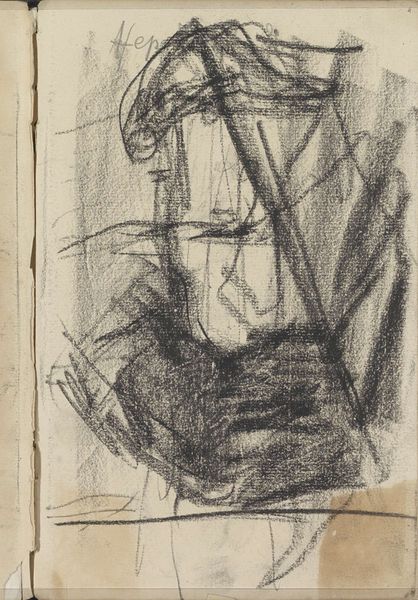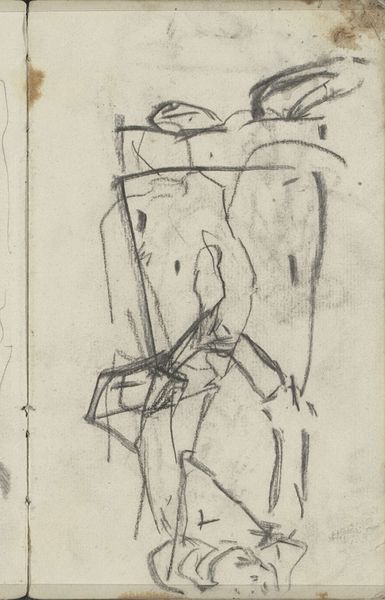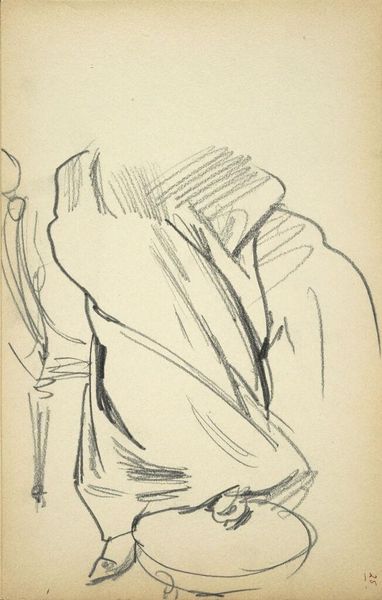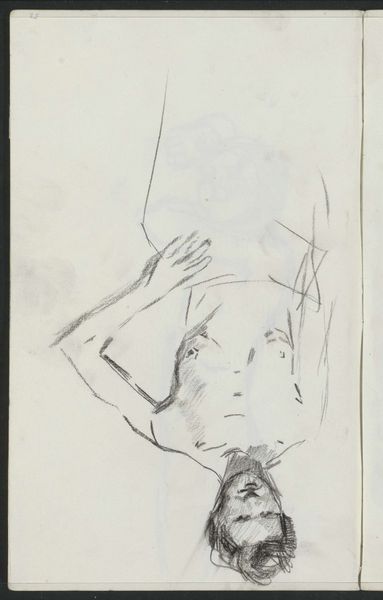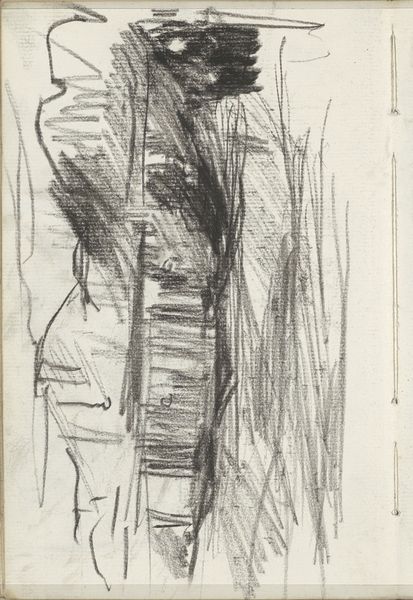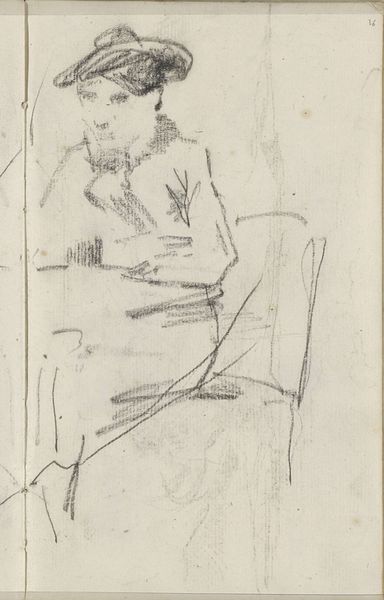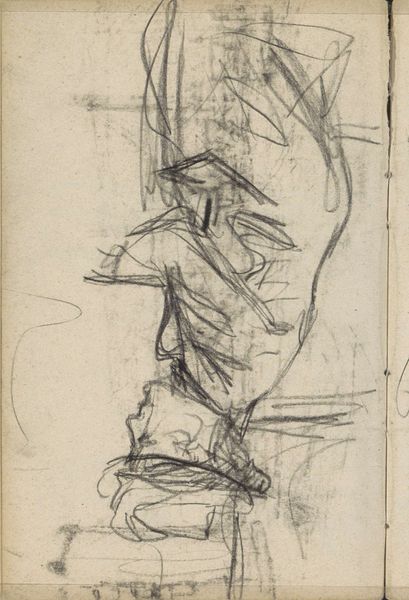
drawing, pencil, graphite
#
portrait
#
drawing
#
pencil sketch
#
figuration
#
pencil
#
graphite
#
academic-art
Copyright: Rijks Museum: Open Domain
Curator: Isaac Israels created this pencil drawing, “Liggende figuur met geheven linkerarm,” sometime between 1875 and 1934. It now resides here at the Rijksmuseum. Editor: The sketch certainly feels spontaneous. The graphite strokes give the figure a restless, almost anxious energy. It's raw, very direct. Curator: Considering Israels' position within the Amsterdam Impressionism movement, the sketch offers insights into the social dynamics of the time and representations of women in particular. How does the figure’s pose—reclining with a raised arm—challenge or perpetuate existing tropes? Editor: I see your point. The sketch feels like an exploration, perhaps a preliminary study, focusing on capturing the figure’s essence more than idealizing her. Looking at the materiality, the rough paper and the visible strokes... it emphasizes process. The means of production become integral. Curator: Indeed. The medium itself contributes to the artwork’s narrative. Pencil and graphite often democratized art making, creating more accessible forms outside established structures. Editor: Exactly. It shifts art away from only established schools. And speaking of structures, the positioning of the model seems to challenge expected class roles of the time. We get a sense that this is about more than aesthetics. The material conditions influenced subject matter. Curator: Thinking intersectionally, the absence of detailed features can serve as an entry point into questioning traditional notions of beauty and representation within art history, potentially engaging with gender theory. Editor: To consider the absence itself is clever. This pushes me to also think about Israels' own socio-economic background, as an affluent and worldly painter who favored depictions of working-class people. I feel encouraged to explore the conditions around how art can challenge the perception of gendered bodies. Curator: Examining this drawing through its historical context reveals layers of meaning. It compels us to consider representation and social roles through art. Editor: Agreed. Paying attention to process helps reframe the consumption of art. It creates dialogues about how different artists use a shared vocabulary in original, deeply resonant ways.
Comments
No comments
Be the first to comment and join the conversation on the ultimate creative platform.
